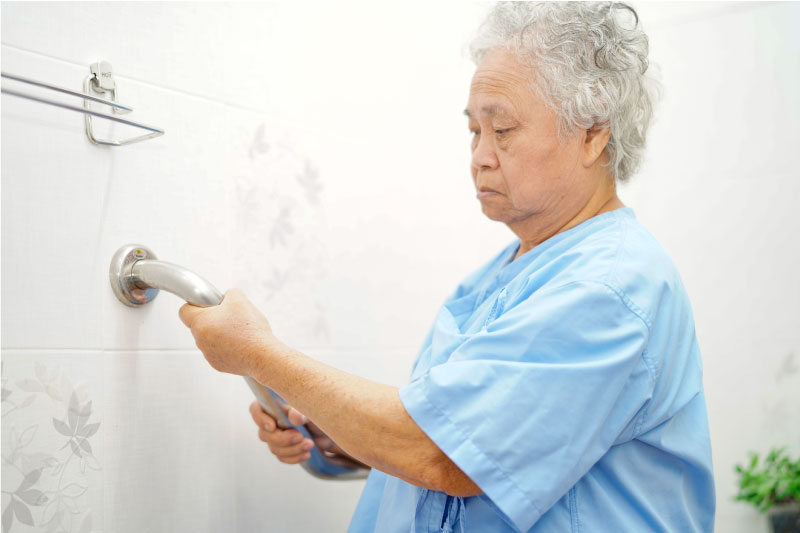
Difficulty with self-care is one of the main reasons seniors move out of their own homes and in with family members or to assisted living communities. Activities like bathing and using the toilet are quite personal, and it can be uncomfortable having to ask for help. Fortunately, there are a number of bathroom modifications that help older people manage these tasks safely and comfortably.
Here are 9 tips for bathroom makeovers for seniors that can help you or your senior relative age-in-place.
- Grab Bars
Grab bars and safety rails are some of the most important bathroom safety modifications for seniors. Place them in the shower/tub area, next to the toilet, and along walls as needed. Learn more about how to install bathroom grab bars.
- Toilet Riser or Raised Toilet Seat
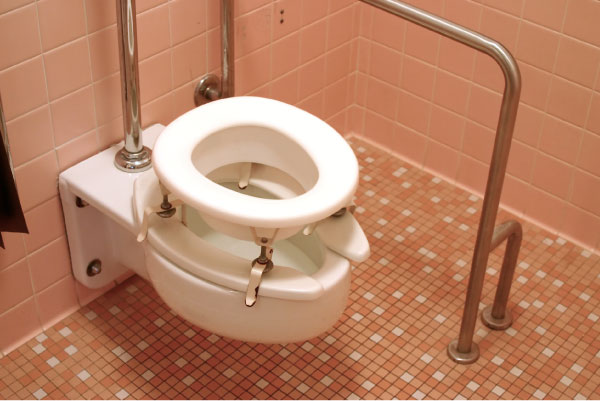
Raised toilet seats are also called “elevated toilet seats.” They help people with mobility issues use the toilet independently. There are many different types, including models that clamp on to the existing seat, non-locking models that fit over the seat, and toilet seats with frames for people who need extra stability. A locking seat with an armrest is a good option for someone who has limited upper body strength and has trouble standing using just a grab bar.
Read these tips for choosing the best raised toilet seat for your bathroom.
- Walk-in tub or Curbless Shower
Stepping into a standard bathtub or even into a regular shower stall is hard for people who have balance problems or difficulty lifting their legs. It’s almost impossible if they use a wheelchair!
A curbless shower is just like a regular shower, except that there’s no low barrier to step over. They’re also called “roll-in showers” because they make it easier for a person who uses a walker or wheelchair to enter the shower and transfer to a shower chair or bench. They cost more than standard shower enclosures to install. Talk with a licensed contractor about modifying the existing shower enclosure to create a no-curb entry.
A walk-in tub allows the user to enter the tub without stepping over a barrier. Walk-in tubs are more expensive the regular tubs, with the most basic models costing $2500 – $5,000. The cost is typically not covered by Medicare, but some state Medicaid programs may cover it and veterans may be eligible through the VA. In addition to the cost of the tub, your home may require structural renovations to accommodate the size and weight of the tub. Learn more about choosing the best walk-in tub for your needs.
- Shower chair or stool
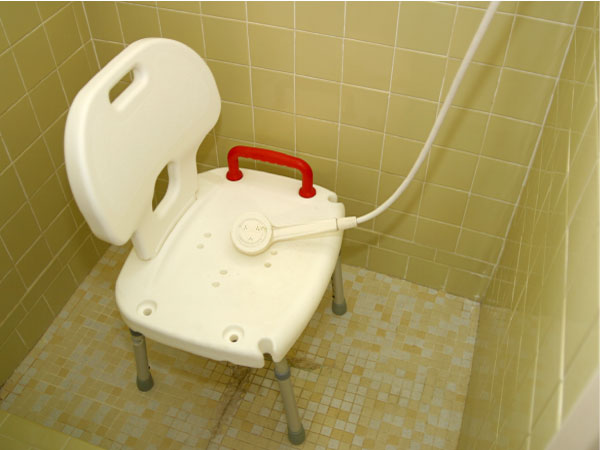
A shower chair or shower stool is a bathroom modification for seniors. It helps them bathe more safely, and less expensive than other options. A standard shower chair or stool is portable, affordable ($50-$300), and isn’t a permanent addition to the bathroom. That makes it a good choice for renters or for families temporarily hosting senior relatives.
In most cases, Medicare doesn’t cover shower chairs, but they are affordable and easy to install.
The type of chair you need depends on the user’s level of mobility, balance, and ability to handle tasks like washing their hair. The basic model is a simple stool with non-slip surfaces. Other models have additional features like a reclining seat or wheeled models that allow the person to be rolled directly into the shower area (if it’s a curbless shower). Some models attach directly to the shower wall and fold down. These are very stable and sturdy, but may require professional installation because they must be attached to wall studs.
Learn more about choosing the best shower chair.
- Home Medical Alert
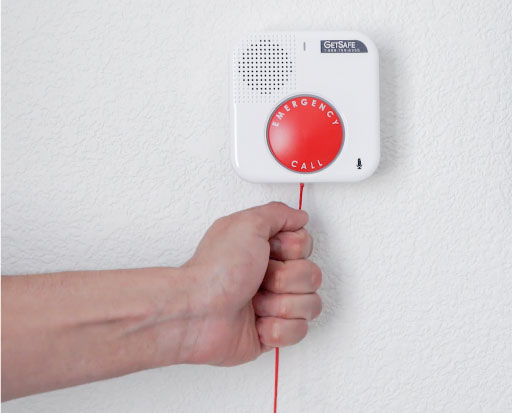
No matter how careful you are, accidents happen – especially on wet surfaces. A home medical alert with a call button or cord makes it easy for someone to summon help. With a voice-activated medical alert unit, you can call for help even if you can’t reach the wall button. The wall buttons are a good choice to improve the home safety of seniors who resist a wearable button and provide an extra layer of safety for those who forget to wear their buttons.
- Bathroom Lighting
Light bulbs have to be replaced, and overhead lights can be a fall hazard if someone has to climb on a stool or ladder to replace the bulb. Consider other lighting options, including fixtures placed lower on the wall, vanity lights along the side of mirrors instead of just at the top, and motion sensors that turn lights on and off automatically.
- Non-slip surfaces
A slick, wet floor is an accident waiting to happen. Even mats and rugs with non-slip backing can be tripping hazards or make it harder to maneuver a walker or wheelchair in a small space. Consider replacing smooth tile flooring with laminate or tile that has a rougher surface and choose textured surfaces for the tubs and shower floors.
- Pocket Sliding Doors
Doorways need to be wide enough for someone to easily go through if they’re in a wheelchair or using a walker. Widening doorways requires structural renovations, so talk to your contractor about installing a pocket sliding door instead of a standard leaf door. This option is much easier for someone with a walker or wheelchair to open and close.
- Sink Height & Clearance: Consider removing the vanity and using a sink mounted on the wall to provide knee space so someone can sit at the sink using a bench or in a wheelchair. Some specialized vanity models have a door that opens and provides space for someone to wheel right up to the sink. They’re more expensive, but provide both accessibility and storage.
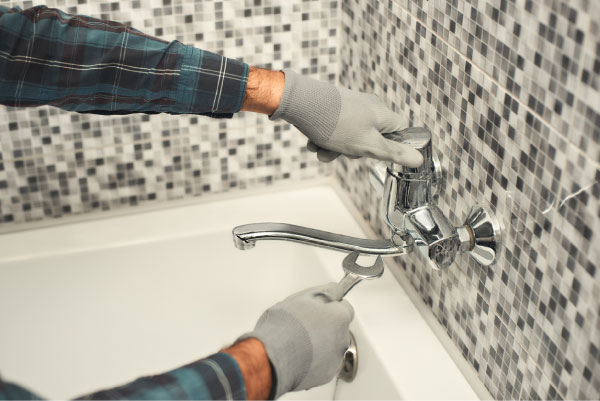
Although most of these bathroom makeover options are DIY projects, others require structural and/or wiring modifications. Even if your building codes don’t require professional installation by licensed, insured contractors and trades people, it’s still a good idea. Get quotes from several contractors and talk with them about opportunities for cost savings. They may have ideas for alternatives that can save costs while still supporting your goal of an affordable bathroom makeover for you or your senior relative.







